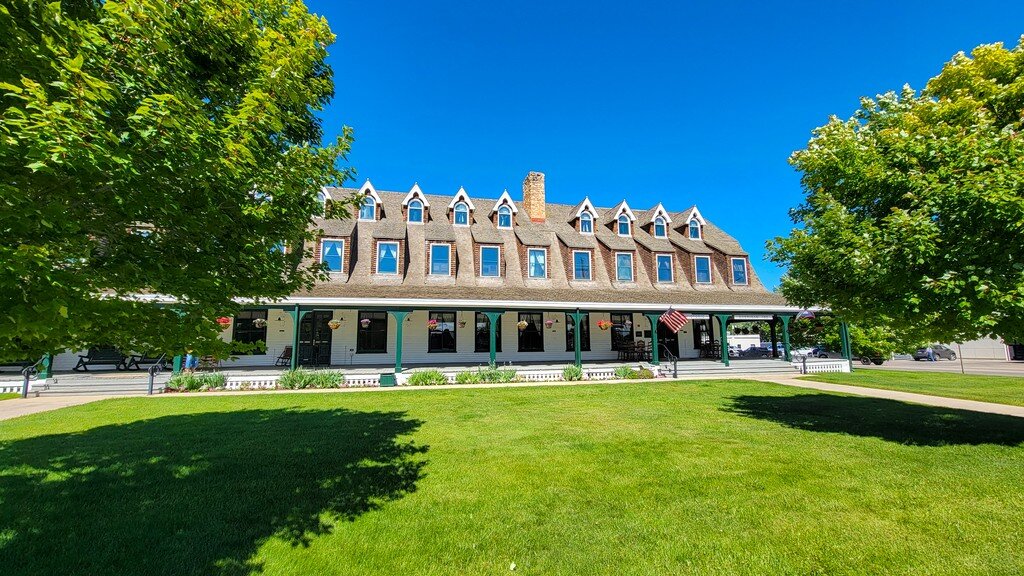
Sheridan, WY
Sheridan, Wyoming, has a rich history that reflects the broader themes of the American West, including Native American heritage, the arrival of European settlers, the cattle industry, and the development of railroads.
Sheridan was founded in 1882 by John D. Loucks, a Civil War veteran and surveyor who named the town after his former commanding officer, General Philip Sheridan. Loucks recognized the area’s potential due to its fertile land, proximity to the Bighorn Mountains, and the growing cattle industry.
The town grew quickly, attracting settlers, ranchers, and entrepreneurs who were drawn to the opportunities in the West. By the late 19th century, Sheridan had established itself as a hub for cattle ranching, which became the backbone of its early economy. Cattle drives from Texas and other areas would pass through Sheridan, making it a key stop along the way.
The arrival of the Chicago, Burlington & Quincy Railroad in 1892 was a turning point for Sheridan. The railroad provided a critical link between Sheridan and the rest of the country, enabling the transportation of cattle, coal, and other goods. This connection helped the town grow and prosper, turning it into a regional center of commerce.
In addition to ranching, coal mining also became an important industry in Sheridan. The surrounding region was rich in coal deposits, and by the early 20th century, numerous coal mines were operating in the area. This brought an influx of workers and further boosted the local economy.
Sheridan also became known for its cultural significance, particularly in relation to the Old West. The town has a number of historic buildings and sites, including the Sheridan Inn, which was built in 1893 and hosted famous guests like Buffalo Bill Cody. Cody even auditioned performers for his Wild West Show at the inn.
Throughout the 20th century, Sheridan continued to grow and diversify its economy, with tourism becoming increasingly important. The town’s proximity to the Bighorn Mountains and its well-preserved historic sites have made it a popular destination for visitors interested in Western history and outdoor recreation.
Today, Sheridan maintains its historic charm while also serving as a modern community. It honors its past with events like the annual Sheridan WYO Rodeo, which celebrates the town’s cowboy heritage. The town is known for its blend of Western culture, natural beauty, and historic significance, making it a unique and vibrant part of Wyoming’s history.
Sheridan Inn
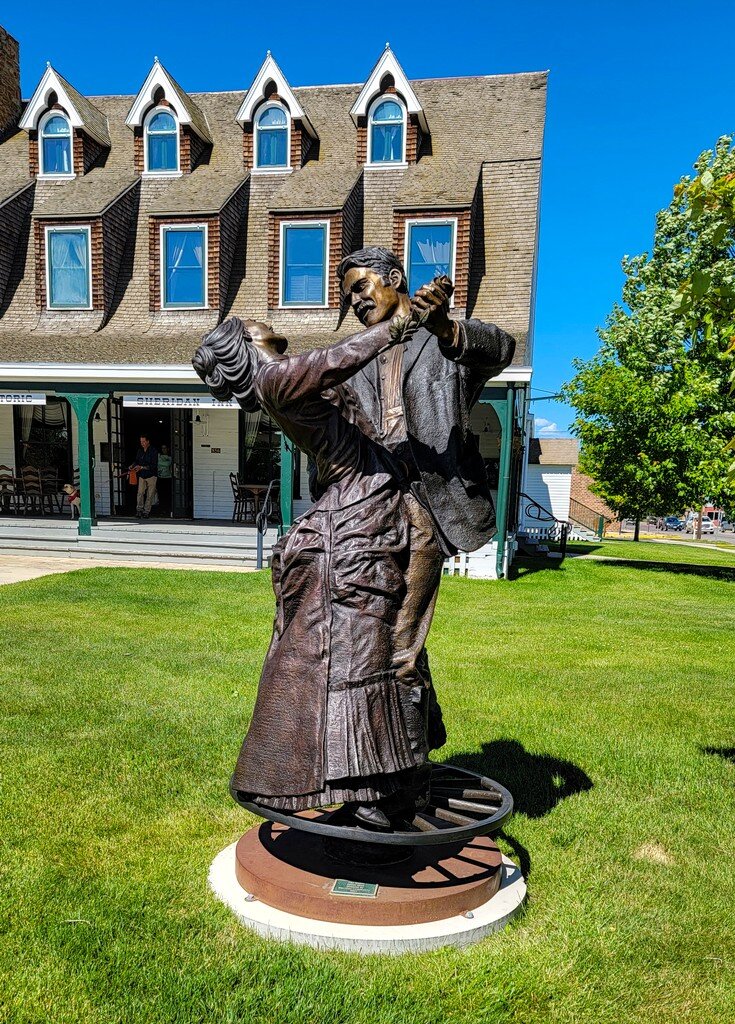
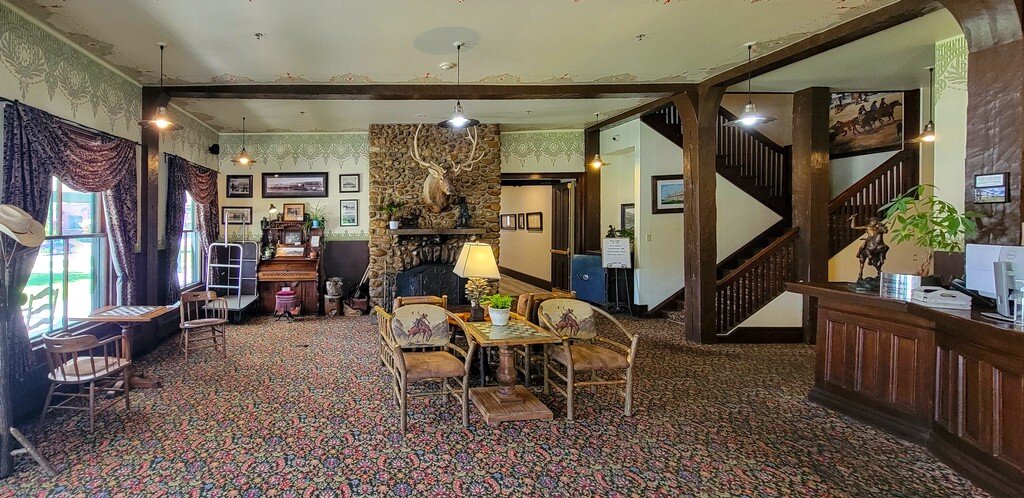
Mint Bar
The Mint Bar in Sheridan, Wyoming, is one of the most iconic and historic watering holes in the American West. Established in 1907, the Mint Bar has been a cornerstone of Sheridan’s social scene for over a century, attracting locals, cowboys, ranchers, and visitors alike.
The Mint Bar originally opened as a saloon, catering to cowboys and ranchers in the early 20th century. Like many establishments of its kind, it played a central role in the social life of the community, offering a place to relax, share stories, and enjoy a drink after a hard day’s work.
During Prohibition, the Mint Bar, like many others, operated as a speakeasy. After Prohibition ended in 1933, the Mint Bar returned to its full glory as a legal establishment and quickly regained its status as a popular hangout.
In the 1940s, the Mint Bar underwent significant renovations that gave it the distinctive Western-themed interior it is known for today. The bar is adorned with knotty pine, taxidermy, and other Western memorabilia, creating an authentic cowboy atmosphere. Its famous neon sign, featuring a bucking bronco, was installed during this period and has become a recognizable symbol of Sheridan.
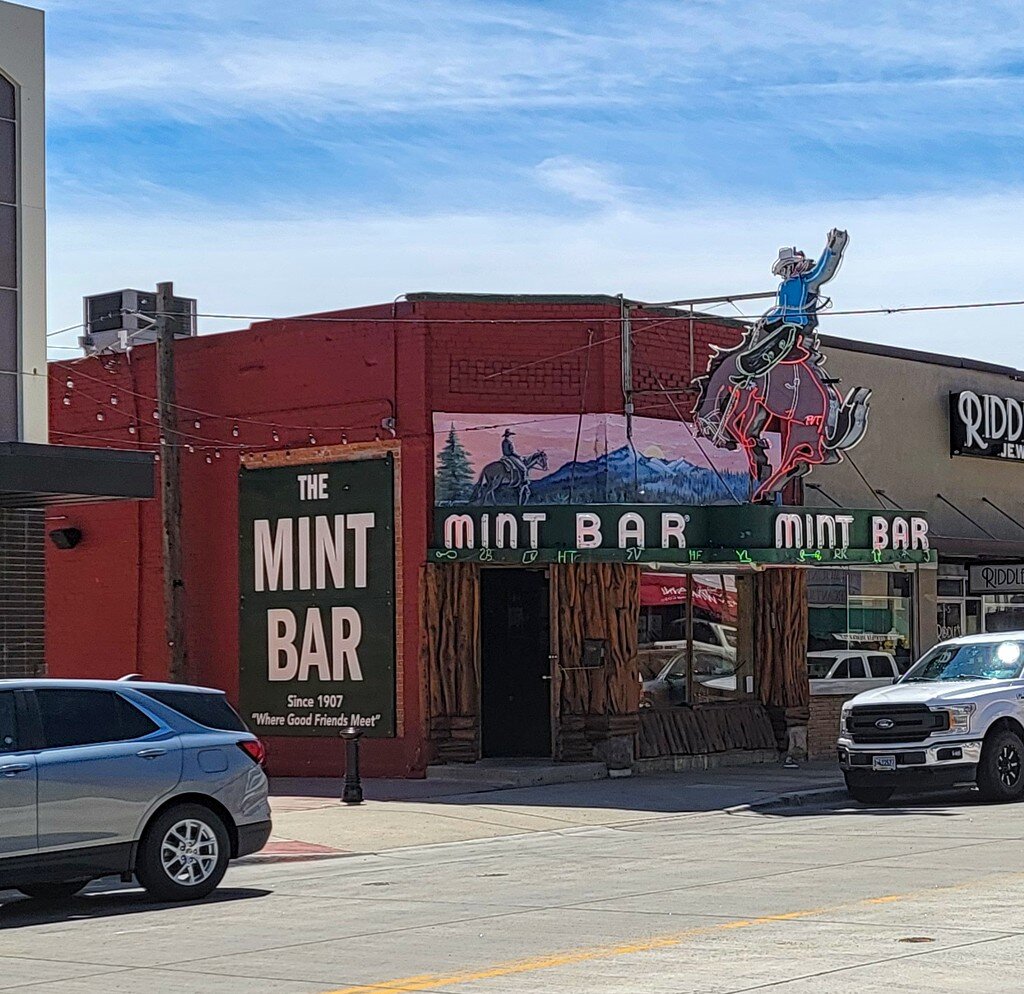
Don King Museum and Store
Don King was a highly influential figure in Sheridan, Wyoming, and is best known for his contributions to the art of saddle making and Western leather craftsmanship. Born in 1923, Don King became a legend in the world of custom saddlery, helping to preserve and elevate traditional Western craftsmanship to an art form.
In 1961, Don King founded King’s Saddlery, a family-owned business in Sheridan that became renowned for its custom saddles, ropes, and other Western gear. King’s Saddlery is more than just a retail store; it’s a cultural institution in Sheridan. The business includes a museum that showcases a vast collection of Western memorabilia, antique saddles, and tools related to leather working and cowboy culture.
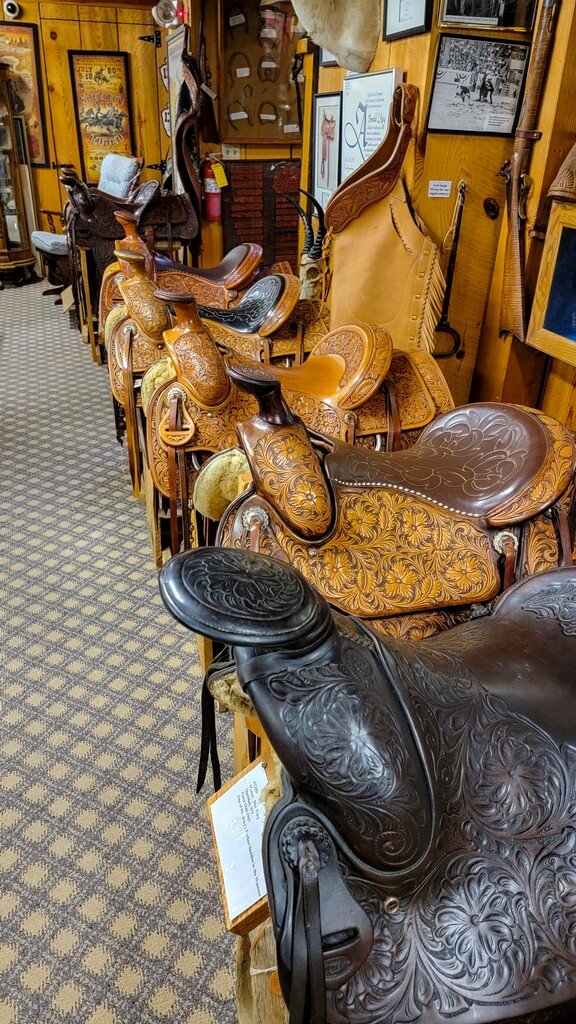
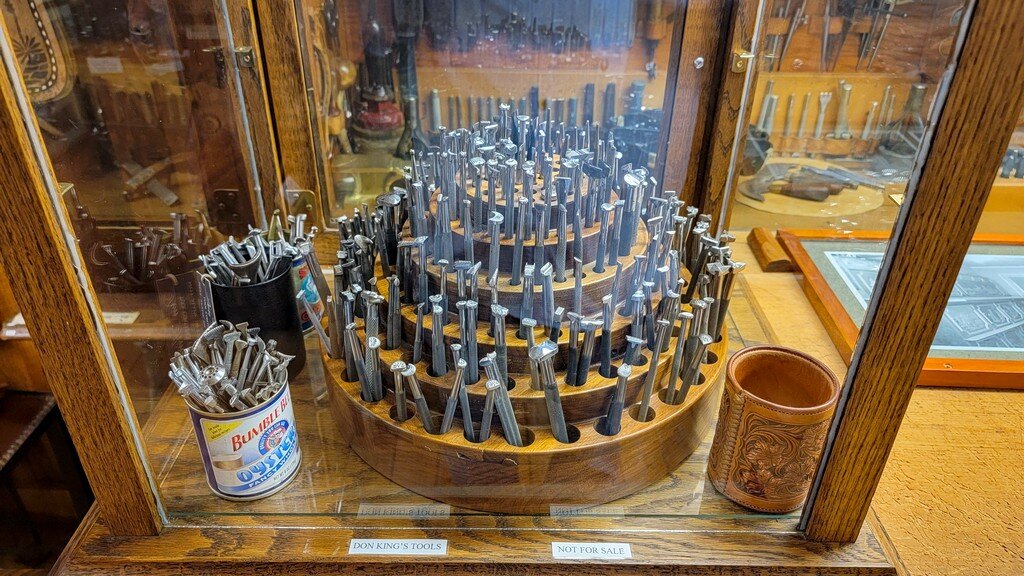
Trail End Historic Site
Trail End was built between 1908 and 1913 as the home of John B. Kendrick, a prominent cattleman, politician, and eventually a U.S. Senator and Governor of Wyoming. Born in Texas, Kendrick came to Wyoming in the late 1800s as a cowboy and worked his way up to become a successful rancher. His wealth and status were reflected in the grandeur of Trail End.
The mansion was designed by Glenn Charles McAlister, an architect from Billings, Montana, and constructed by local craftsmen using materials like brick and sandstone. It was equipped with modern amenities of the time, such as electricity, central heating, and indoor plumbing. The mansion stands as a testament to the opulence and elegance that characterized the lives of the American elite during that era.
The mansion includes several impressive rooms, such as the grand entry hall, formal dining room, and a ballroom on the third floor. The attention to detail in both design and craftsmanship makes Trail End a unique architectural landmark in Wyoming.
The Kendrick family lived in Trail End until the 1930s, when the house was passed down to John Kendrick’s son, Manville Kendrick. The family played a significant role in the political, economic, and social life of Wyoming, with John B. Kendrick serving as Governor from 1915 to 1917 and as a U.S. Senator from 1917 until his death in 1933.
In 1968, the State of Wyoming acquired Trail End, and it was opened to the public as a state historic site. The house has been carefully preserved and restored, with many of the original furnishings and decorations still in place. Today, visitors can tour the mansion and explore the rooms that tell the story of the Kendrick family and early 20th-century life in Wyoming.
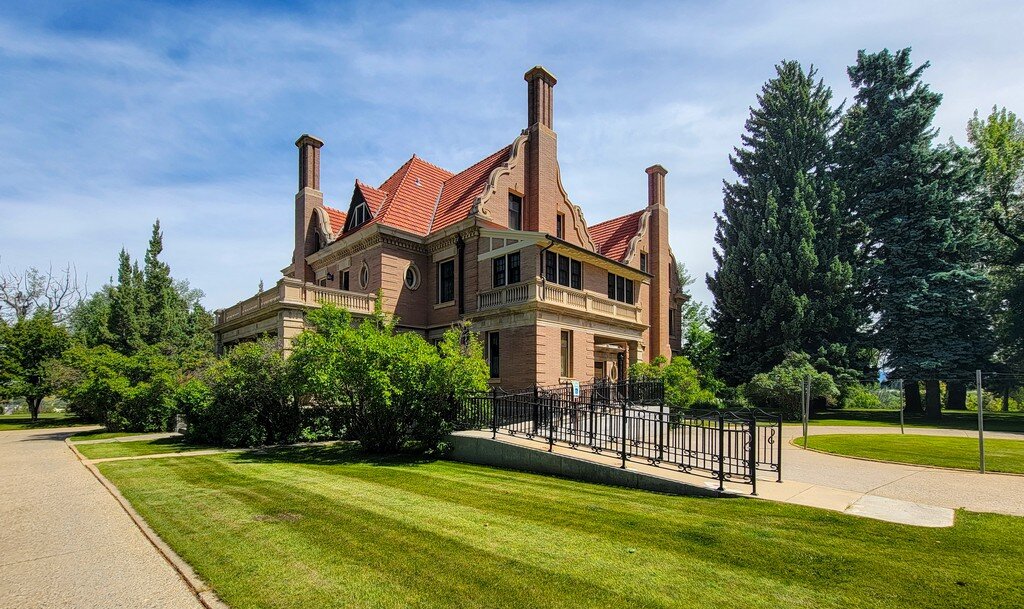
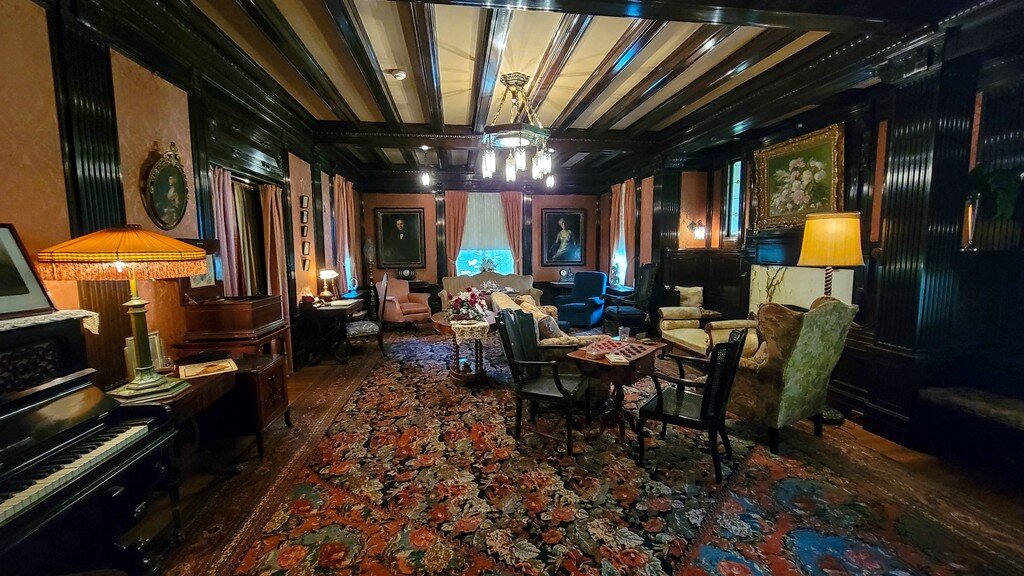
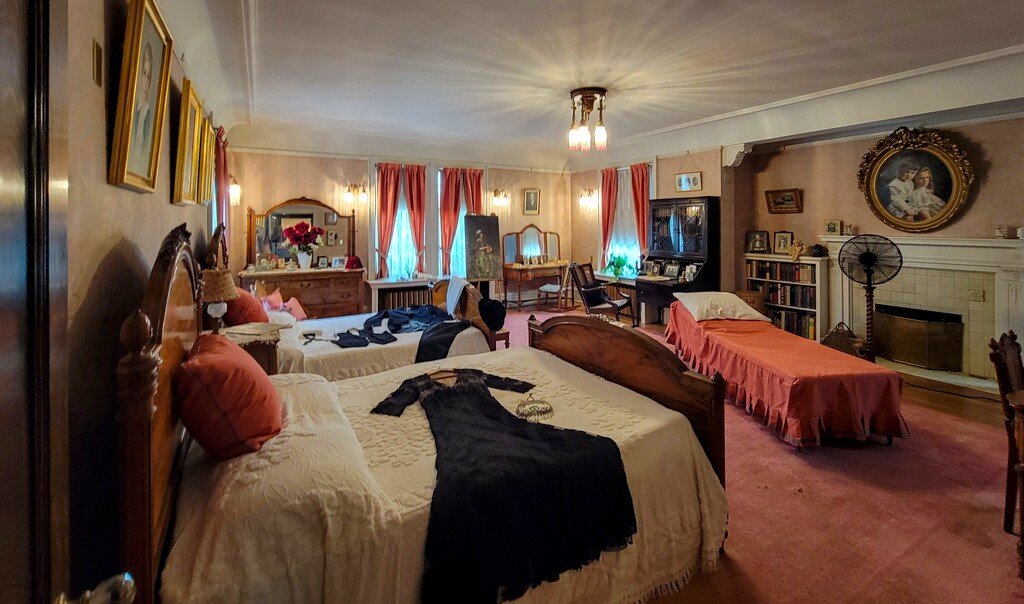
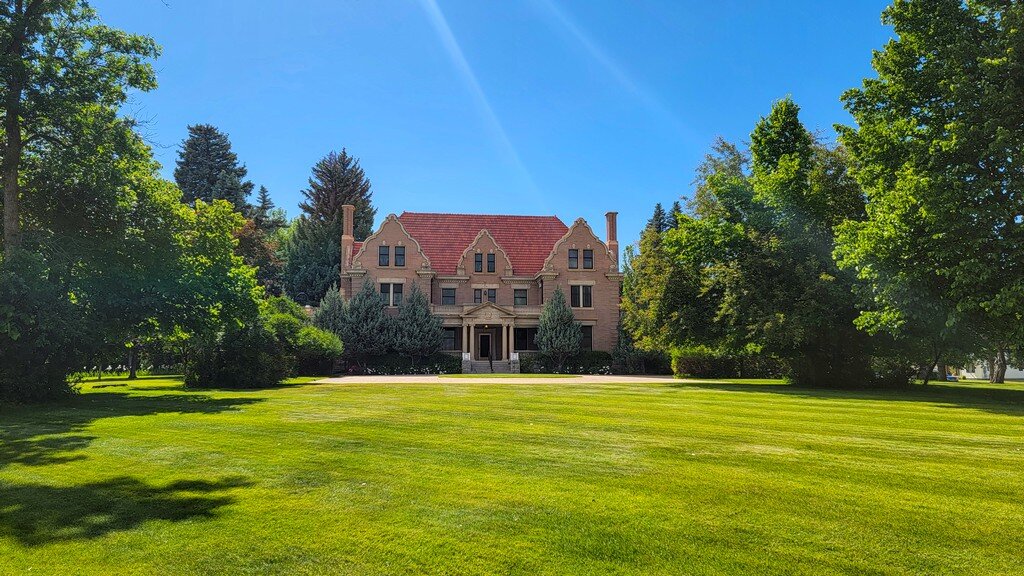
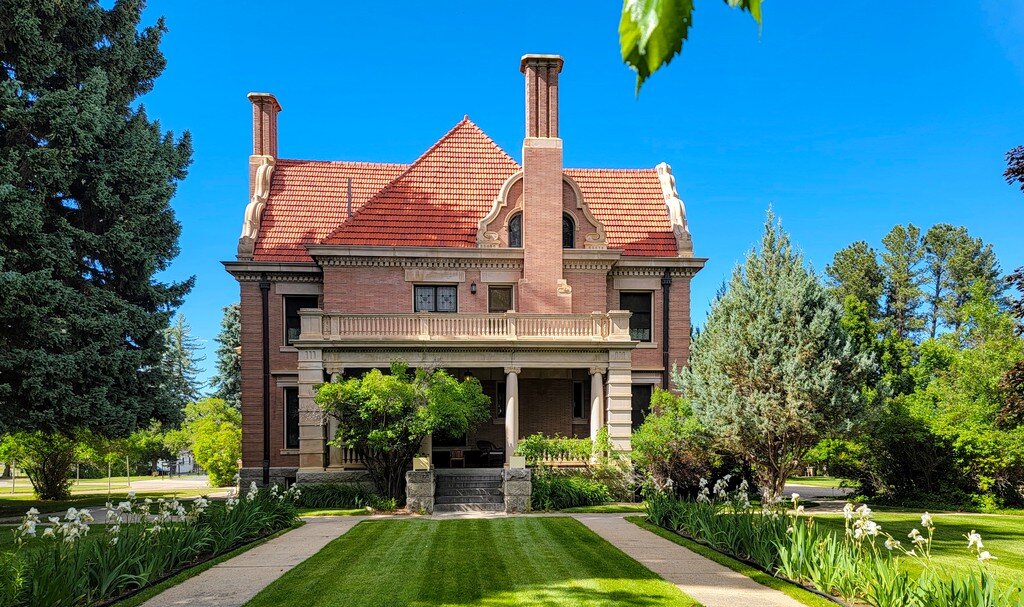
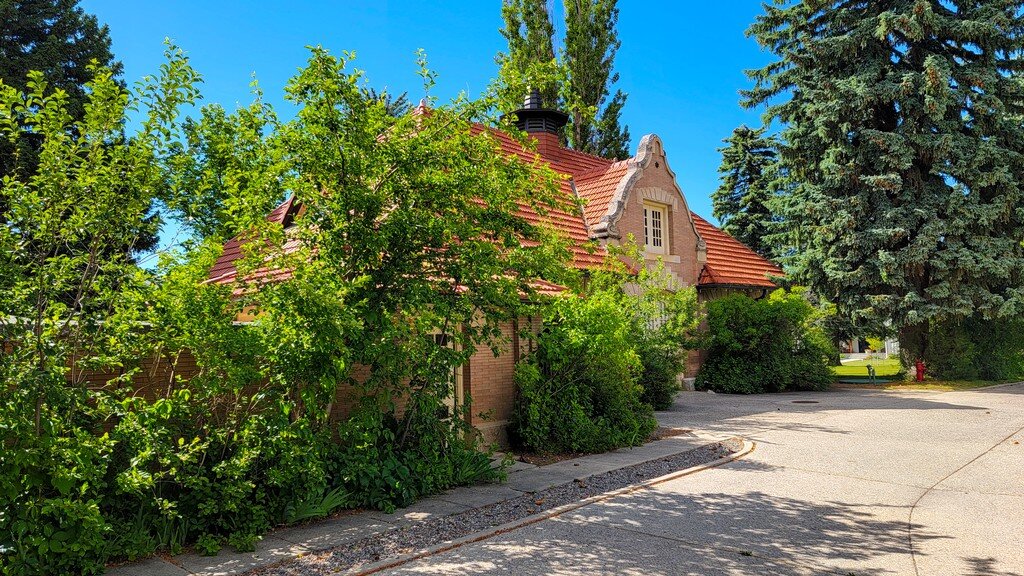
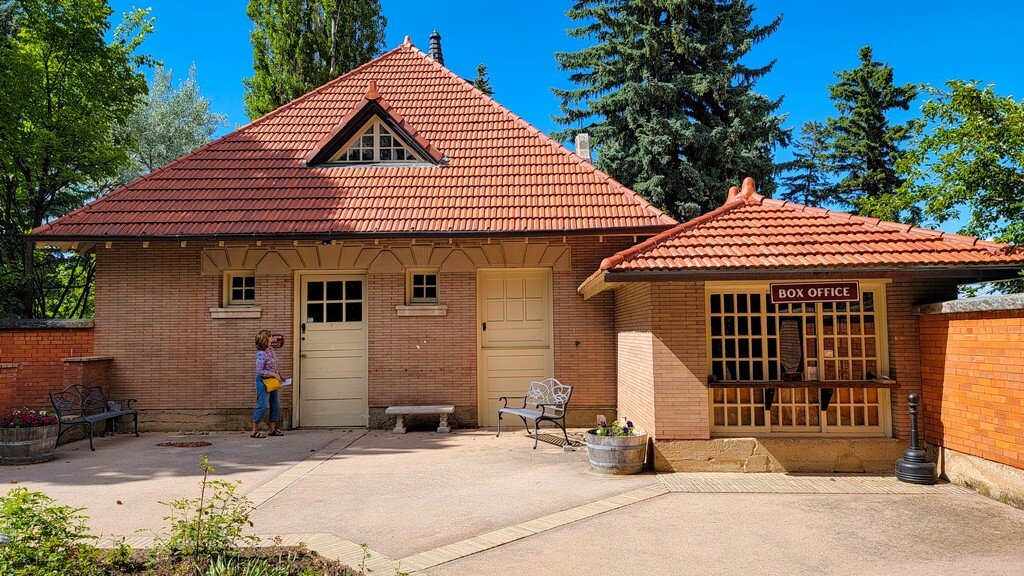
The Brinton Museum
The Brinton Museum, located in nearby Big Horn, Wyoming, is a cultural and artistic gem that showcases the art, history, and culture of the American West. The museum is situated on the historic Quarter Circle A Ranch, which was once owned by Bradford Brinton, an art collector and rancher. Brinton amassed an impressive collection of Western and Native American art, artifacts, and historical documents, which form the core of the museum’s exhibits. The museum features works by famous Western artists like Frederic Remington, Charles M. Russell, and Edward Borein, as well as a significant collection of Native American artifacts, including beadwork, textiles, and pottery.
In 2015, The Brinton Museum expanded with the opening of the Forrest E. Mars, Jr. Building, a state-of-the-art facility that houses additional exhibits and provides stunning views of the Bighorn Mountains. The building’s design integrates with the natural landscape, and its environmentally conscious architecture is a highlight in itself.

Park Review – Peter D’s RV Park
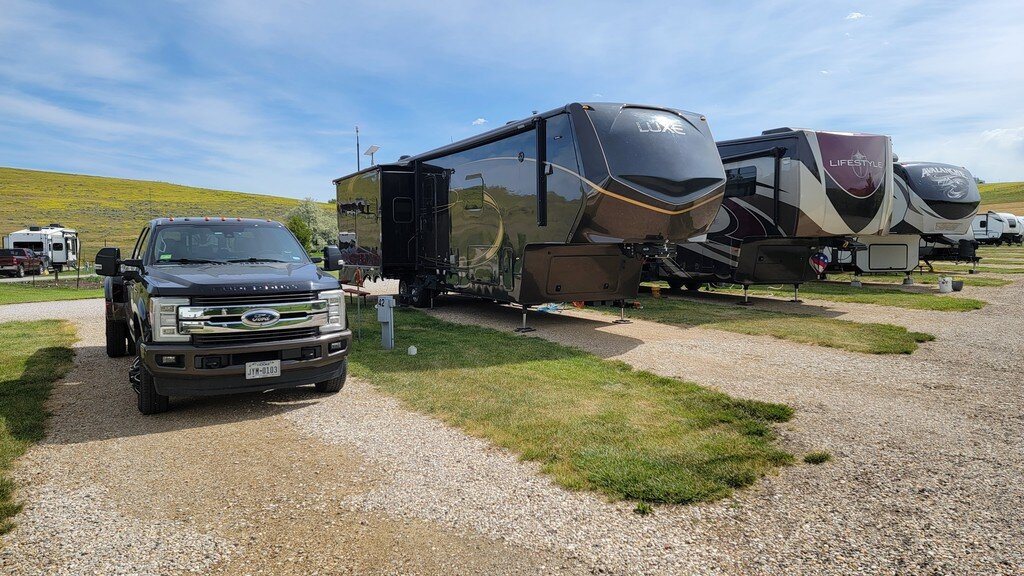
Rating: ⭐⭐⭐⭐
Location: Sheridan, WY
Type: Commercial Park
Site Quality / Amenities: The roads and pads are gravel. Each site has a picnic table.
Access: From Interstate 90, take exit 23 toward WY-336/5th St. then go west on 5th St (WY-336) toward town for 0.3 mi. Turn right onto Joe St. and the park will be on the right after 2 blocks.
Staff: Peter D’s is owned and run by a husband and wife team and they are both excellent hosts. At check-in we were offered lettuce and spinach from their on-site garden. Also, their sites are 60 feel long which is too short for us to park our rig and truck on (we need about 65′ at a minimum) and rather than having us park in their overflow parking they gave us the adjacent site for us to park on at no charge. Considering the park was nearly full every night, that was very generous.
Cellular/WiFi: Verizon 4G LTE speeds were about 10 Mbps down and 3 Mbps up. Starlink speeds were great at more than 200 Mbps download and 30 Mbps up. WiFi is available in the park but we didn’t use it.
Restaurants: Wyoming’s Rib and Chop House – Bring a business card from Peter D’s and you will get a free appetizer of Fried Green Tomatoes topped with crab meat. That and their drinks were the best part of the meal. Steaks here are broiled on the plate they serve them on. It just wasn’t as good as grilled steaks. Anna got salmon and it was better. Las Delicias – Unexpectedly decent Mexican food, it wasn’t Tex Mex but it was good.
Nearby parks: We didn’t look at any other parks nearby.
What we liked: Sheridan is a beautiful small city with a lot to see and do in the area. Compared to other parks we have stayed at in Wyoming, this is probably one of the best.
What we didn’t like: The sites were somewhat short for larger rigs. Although they accommodated us by giving us a neighboring site to park the truck on, we might have had to park in overflow parking otherwise.
Verdict: We would stay here again if in the area.
4 thoughts on “Sheridan, WY”
Thanks for sharing all about Sheridan – a lot of history there for sure! Enjoy your travels to your next destination!!
That looks like a great place to visit. I’m drooling over the fried green tomatoes with crab meat!
Jerry and Anna,
Thank you for continuing to share these with me. If it were not for you, I would never have seen and enjoyed these places with you!!
Bill
I’m always impressed by your write-ups. And Wyoming – what a great place to be this summer. Good to Keep Up.
Kelli